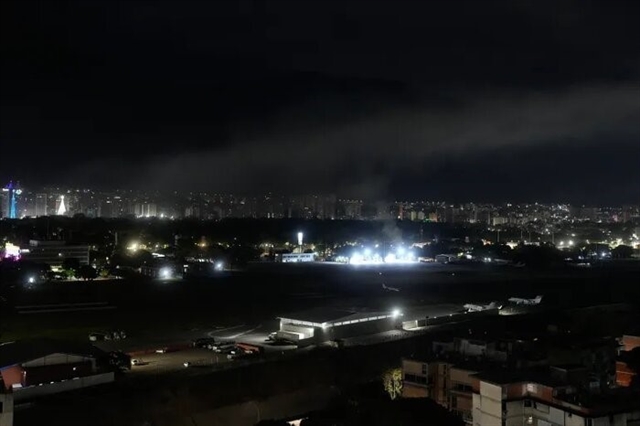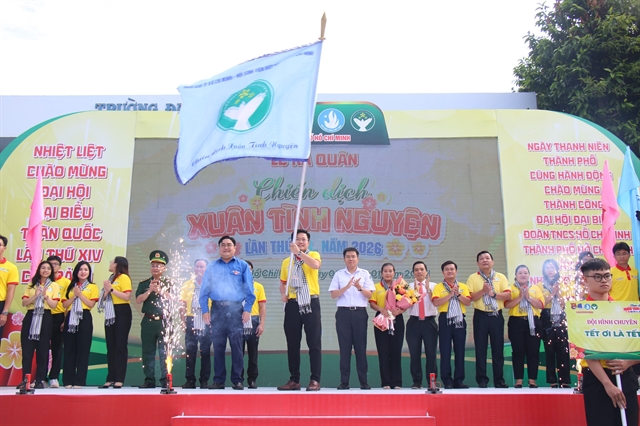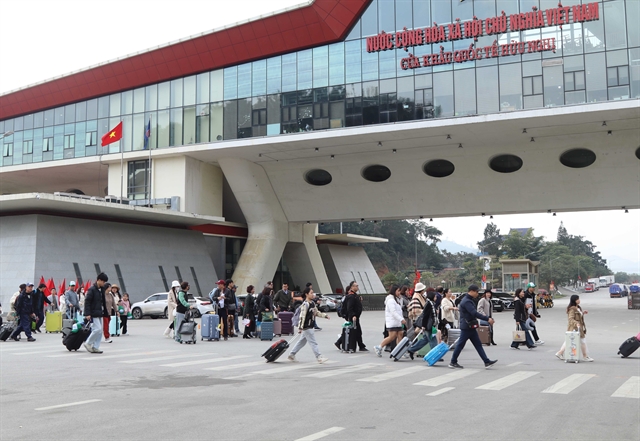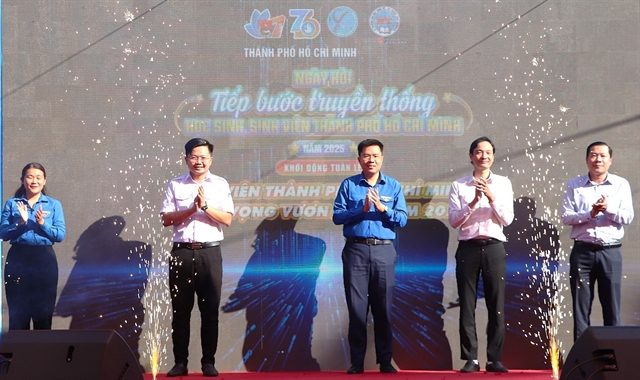 Society
Society

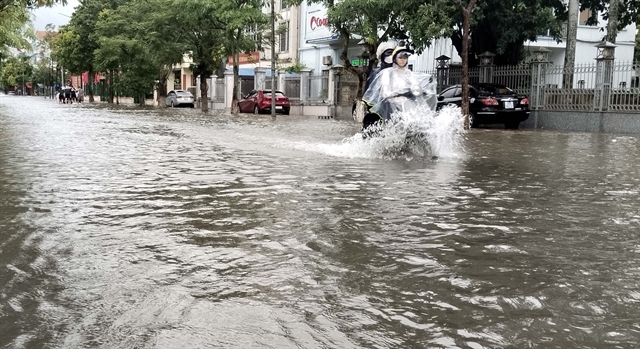 |
| Heavy rains triggered by Typhoon Kajiki cause flooding on several roads in Hưng Yên Province on Monday. — VNA/VNS Photo |
HÀ NỘI — Prime Minister Phạm Minh Chính on Monday instructed ministries, agencies and local authorities to take urgent action as Typhoon Kajiki, designated Typhoon No.5 in Việt Nam, rapidly approaches the country’s north-central coast.
According to the National Centre for Hydro-Meteorological Forecasting, the typhoon was about 120km off Nghệ An Province and 100km east of Hà Tĩnh on Monday morning.
Maximum sustained winds near its centre reached levels 13–14 on the Beaufort scale (equivalent to 134–166 km/h), with gusts up to level 16.
Coastal areas from Thanh Hóa to Hà Tĩnh were already experiencing winds of level 7–8 (60–74 km/h), gusting to level 9, with conditions expected to worsen as the storm makes landfall.
Forecasters warned that Kajiki is likely to strike Nghệ An and Hà Tĩnh by evening, bringing destructive winds, storm surges and large waves that could threaten sea dikes, coastal roads and river estuaries.
Authorities also cautioned against deep flooding and erosion along coastal Thanh Hóa and northern Nghệ An, while Hưng Yên and Ninh Bình were advised to prepare for overtopping and potential breaches of sea and estuary dikes.
Heavy rains could trigger flash floods and landslides in mountainous areas, as well as widespread flooding in low-lying communes and urban centres.
In his directive, the Prime Minister called on all levels of government to maintain the highest state of readiness, expedite evacuations from dangerous areas and prepare for post-storm recovery.
“Protecting lives and property is the priority,” he said, while emphasising the need to ensure the upcoming 80th anniversary of National Day on September 2 and the start of the new school year proceed safely.
Provincial leaders in Thanh Hóa, Nghệ An, Hà Tĩnh and Quảng Trị were ordered to urgently relocate residents from unsafe housing and areas at risk of landslides and flash floods.
Local authorities must restrict travel on roads and rivers when winds and rain intensify, enforce strict traffic controls to prevent accidents and ensure essential supplies, electricity and communications are maintained.
Provincial leaders were also instructed to oversee and inspect emergency efforts in key communes and villages, particularly those at risk of being cut off.
The directive outlined specific responsibilities for ministries.
The Ministry of Agriculture and Rural Development was tasked with providing timely forecasts, protecting dikes and reservoirs, and safeguarding agricultural production.
The Ministry of Industry and Trade was asked to guarantee the safety of hydropower dams, the electricity grid and other energy systems.
The Ministries of Defence and Public Security were directed to deploy forces and equipment, including helicopters, to assist evacuations and carry out rescue operations as needed.
The Prime Minister also ordered state media — Vietnam Television, the Voice of Vietnam and the Vietnam News Agency — to expand coverage of Typhoon Kajiki, broadcast updates from central and local authorities and provide the public with guidance on coping with severe storms and flooding.
The Office of the National Civil Defence Steering Committee was tasked with closely monitoring the situation, mobilising resources to support localities, and submitting daily reports to the Prime Minister.
Any serious or unexpected incidents must be reported immediately.
Deputy Prime Minister Trần Hồng Hà was assigned to oversee coordination between ministries, agencies and localities in the nationwide response. — VNS

